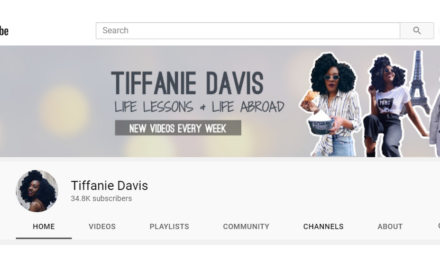Creating customer confidence is one of the biggest, undying goals of content marketing. It’s no secret that consumers these days are spoiled with choices. Regardless of the products or services they need, there are hundreds – maybe thousands – of brands that offer similar solutions.
Content marketing is about showing people that your products or services are better than those of competitors. Incorporating psychology into your messaging is perhaps the best way to do this while making people more confident in their decisions. The most successful brands on the planet use a number of psychological tactics to compel people to buy. Ultimately, this is the difference between outstanding marketing and mediocre marketing.
Let’s discuss three powerful psychological levers you can pull to build customer confidence.
1. Genuine Social Proof
The concept of social proofing in the age of constant connectedness is a fascinating one. It revolves around the idea that people follow the actions of the masses. The reason this works so well is because the third-parties leaving their social proof typically have no affiliation with the business, product, or service. They have nothing to lose by expressing their honest opinions. Therefore, this raw sentiment holds a great deal of weight when influencing buying decisions. It is reported that 92% of consumers now read online reviews before interacting with a business, a number up from 88% in 2014. That said, providing social proof is one of the most powerful psychological weapons in content marketing.
While the psychology of social proof has been used in the business world for centuries, brands today are able to leverage it in a number of ways to present their product or service more authentically. This includes showing it on the company website or popular review sites.
When you go this route, it’s important to note that only displaying the best and brightest reviews can quickly make people skeptical. That being said, you need to be very smart about how you do this. For example, if you look at these reviews of Trustpilot on this software review site, you’ll notice that while there are certainly a great deal of 5-star reviews, there are also a few less-than-stellar ones sprinkled in.
No brand, product, or service is perfect. Consumers know this. If you try to convince them otherwise, you are damaging your credibility, diminishing customer trust, and coming off as fake. In order for social proof to come off as genuine, it can’t ALL be peaches and cream.
2. Emotional Investment
With content marketing, it’s all about giving people a reason to care that is beyond your business, product, or service. This is how you build customer loyalty and create value that people cannot get anywhere else. For this purpose, many companies are prompting emotional investment through cause marketing. Cause marketing, in a nutshell, is a corporate responsibility to support a social movement or purpose. A study conducted by Cone/Porter Novelli found that 77% of consumers feel stronger emotional connections with purpose-driven companies over traditional ones–making this an incredibly powerful psychological marketing tactic.
Look at companies like Patagonia and The North Face. These two brands do a phenomenal job of promoting their commitment to environmental awareness and sustainability through content marketing.
By weaving these strong environmental values into their brand messaging, they have done more than just differentiate themselves; they have created a powerful bond between their products and a movement. In turn, people aren’t just buying articles of clothing, they are investing in a lifestyle for the good of the planet. Over the years, creating this type of emotional investment in their products has done wonders to catapult these two brands to the very top of the clothing industry.
Replicating this strategy is not overly complex. The key is finding a certain degree of content overlap between a social issue and that of your brand. For example, if you are a SaaS company, supporting an effort to help give less fortunate school children access to the internet would be a logical angle to get people emotionally invested in your offerings. All you need is a captivating content strategy that addresses the issue, conveys the brand’s involvement, and prompts action.
3. Candid Brand Persona
There is an extremely interesting phenomenon happening in the marketing world these days. It seems that brands are trying to be more like people and people are trying to be more like brands – another likely side effect of the age of constant connectedness.
In general, people relate better to other people, rather than to brands. For this purpose, companies are using content marketing to show the world that there are actual people behind a fancy logo and mission statement. The goal is to create human traits that customer segments can easily relate to. This involves stepping away from your traditional brand messaging every once in a while and producing some candid, unfiltered content.
One of the greatest examples of this concept is Buzzfeed. When followers hear the name, or see the logo, there is an instant association with human characteristics like quirkiness, sarcasm, and a ‘bored at work’ mentality. They are able to solidify these traits by incorporating things like live Q&A sessions into their content marketing strategy. Here is one they did last year:
The hosts of these segments are chosen to represent the brand. And due to the on-the-fly nature of this format, the audience is able to see the brand characteristics in a more natural light.
There are many ways you can accomplish this in your own strategy. Running live video segments and podcasts are great places to start. Discuss the latest news in your industry, host Q&As, provide a behind the scenes look at your business, etc. Not only does this give you the ability to showcase a candid persona, it gives the audience a chance to interact in real time.
The most important thing to remember when running these segments is to let it flow naturally: don’t be overly dependent on a script. When people can create personal connections with your brand characteristics, they are MUCH more receptive to messaging that builds customer confidence.
Conclusion
Customer confidence does not come easy these days. Operating a successful business is about so much more than just products and services. It’s about promoting a level of personal value that people have strong connections with.
Marketers must learn to use psychological levers to get people more invested in their messaging. Whether this means wisely using social proof to justify decisions, creating an emotional attachment to your brand values, or simply putting a relatable personality behind the logo, the end goal is to have customers thinking: “I’m glad I chose this brand!”






